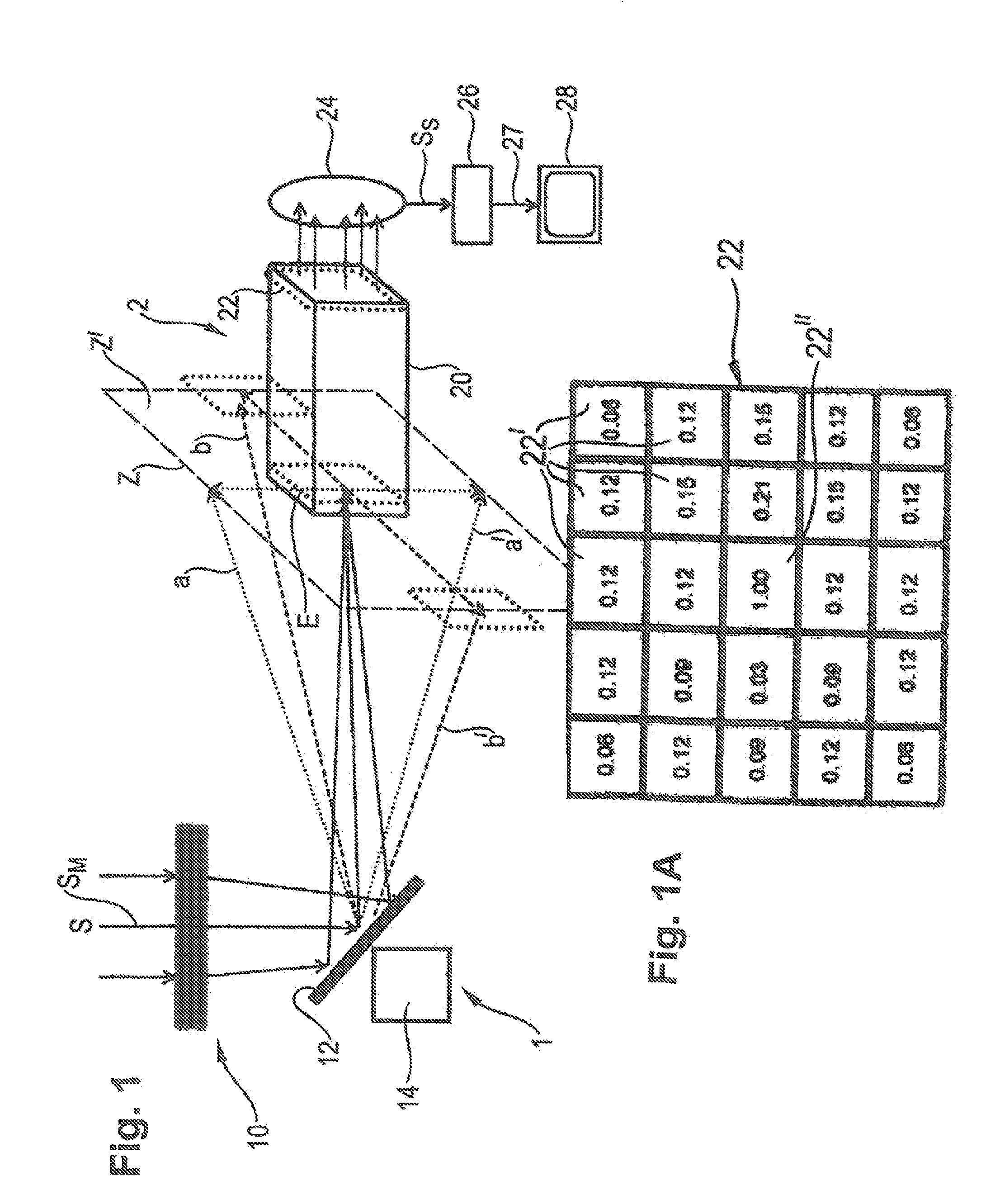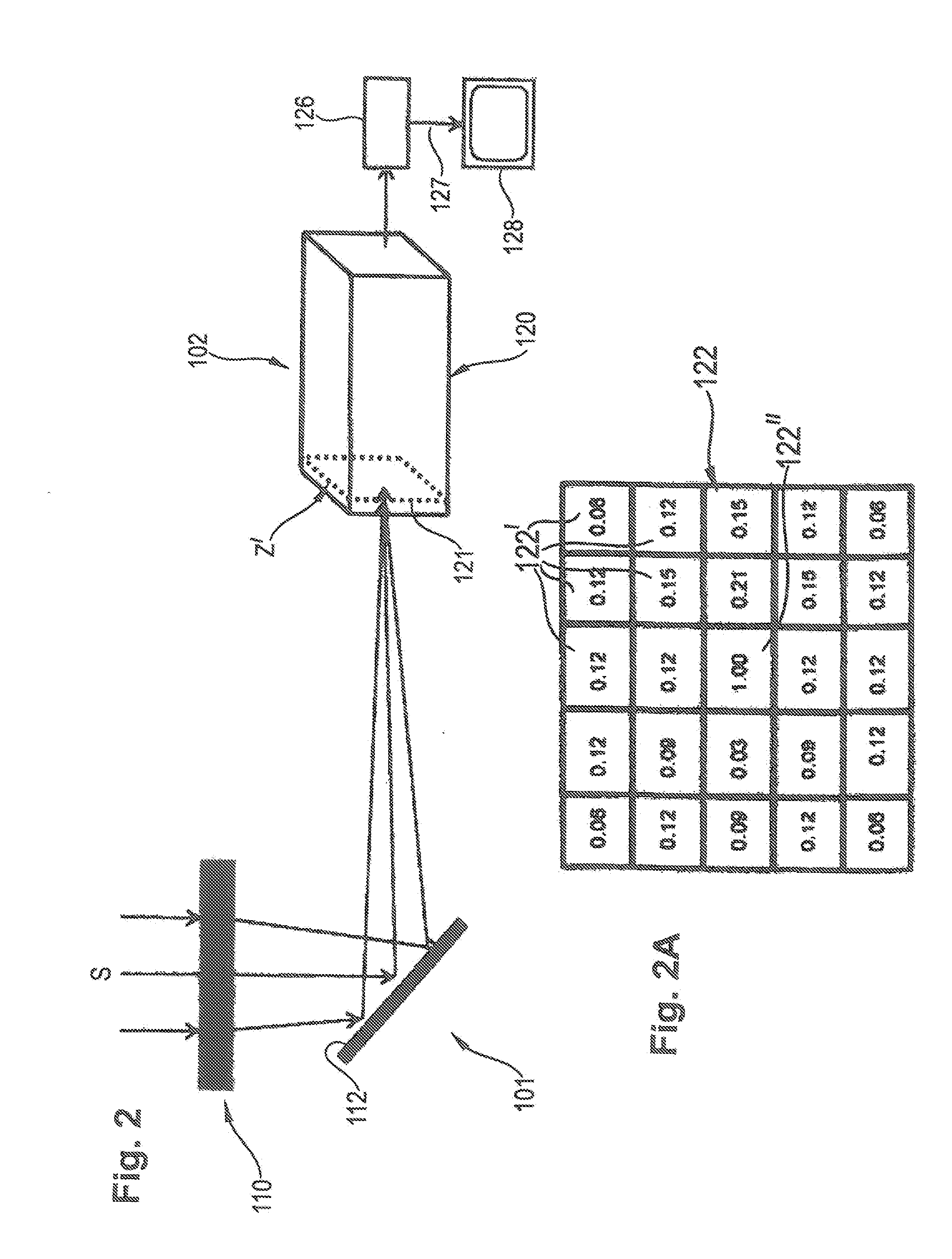Method for Image Processing and Method that Can be Performed Therewith For the Automatic Detection of Objects, Observation Device and Method for High-Precision Tracking of the Course Followed by Launched Rockets over Large Distances
- Summary
- Abstract
- Description
- Claims
- Application Information
AI Technical Summary
Benefits of technology
Problems solved by technology
Method used
Image
Examples
Embodiment Construction
[0057]FIG. 1 shows an observation apparatus according to the invention, having an optical device 1 and an image processing device 2. The optical device 1 has a telescope unit 10 having a long-focus lens, which is shown only schematically in the figure. The telescope unit 10 captures electromagnetic radiation S of an observed scene in the visible spectrum of light and outside of the visible spectrum of light (for example infrared and / or ultraviolet radiation).
[0058]The radiation S captured by the telescope 10 is passed to a movable deflection mirror 12, which can be driven by a drive 14, shown only schematically in FIG. 1, to carry out a two-dimensional scanning movement. The vertical deflection of the deflection mirror 12 takes place in an angle range that is defined in FIG. 1, as an example, by the upper boundary line a of a center jet SM and by the lower boundary line a′, as well as by a first lateral boundary line b and a second lateral boundary line b′ of the center jet SM. In t...
PUM
 Login to View More
Login to View More Abstract
Description
Claims
Application Information
 Login to View More
Login to View More - R&D
- Intellectual Property
- Life Sciences
- Materials
- Tech Scout
- Unparalleled Data Quality
- Higher Quality Content
- 60% Fewer Hallucinations
Browse by: Latest US Patents, China's latest patents, Technical Efficacy Thesaurus, Application Domain, Technology Topic, Popular Technical Reports.
© 2025 PatSnap. All rights reserved.Legal|Privacy policy|Modern Slavery Act Transparency Statement|Sitemap|About US| Contact US: help@patsnap.com



